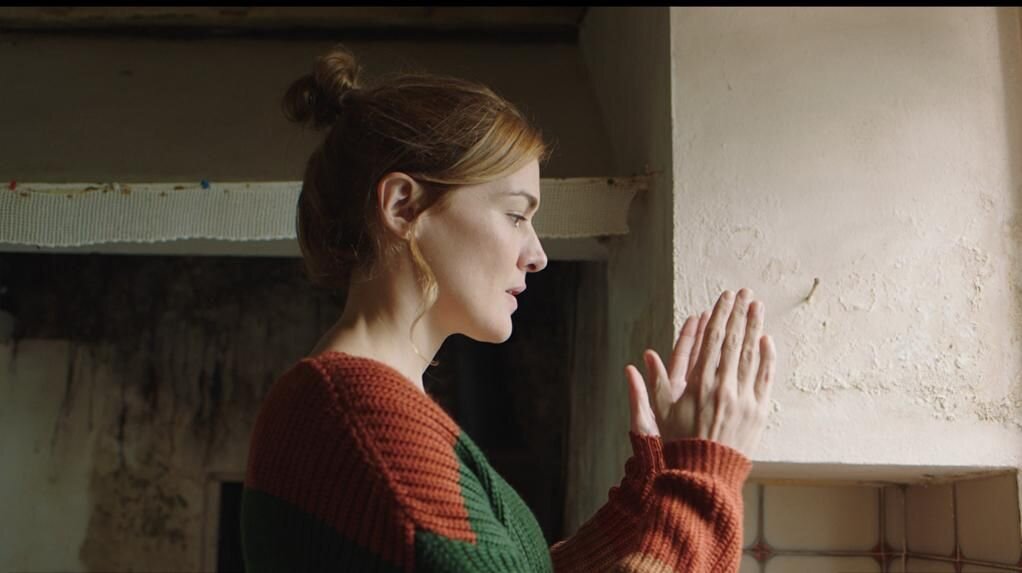TIFF 2021: OUT OF SYNC
TIFF 2021Director Juanjo Giménez submits to his audience a fantastic hook right away in the beginning moments of OUT OF SYNC. That is: the film will be about sound, and possibly the technical aspects of incorporating sound into the movies. The opening scene is a dynamite display of a professional sound designer working in the sound room one night. She crafts sound effects and syncs them to her movie. The scene itself calls upon a great deal of technical skill from the sound and editing departments of OUT OF SYNC, but it also highlights how they go about their work at the same time. It’s a lovely scene in a movie about people making movies, and it pulls the audience directly into the behind-the-scenes work; it’s great. Then, the sound technician protagonist, known only as ‘C’, displays mild symptoms that her hearing is going, or at least her hearing is not quite working correctly. Her physical processing of sound is “a couple of frames” off from the events actually making the noises. As the apparent ‘delay’ problem worsens, OUT OF SYNC teases that it will become one of those films which centers on a sensory experiences, like De Palma’s Blow Out or even more recent films such as The Quiet Place or Sound of Metal. All-in-all, it’s a quality first act. Unfortunately, it’s a level of quality, atmosphere, and nuance that OUT OF SYNC ends up abandoning, choosing instead to pursue bizarre directions and gradually make decisions that disconnect the audience from the main character.
In the film’s second act, C’s (played by the talented Marta Nieto) condition worsens and worsens. The delay between the sound event and her ear’s processing widens and widens. So too does the gap between the film and its audience, as Giménez trusts more and more that his sound-delay phenomenon and his lead actress are increasingly compelling to watch. The novelty of the out-of-sync picture and sound gets tedious after a while as the film continually fails to bring compelling information to the story or character arc. By following Nieto around as she roams the streets of her town, OUT OF SYNC slowly establishes that her audio-video over a minute long. Giménez communicates this gap by simulating it for the audience within the film’s post production, so we the audience experience C’s ‘gap’ as well. It actually grows disorienting and stale after a while. It’s hardly the kind of film trickery that keeps one’s interest unless there’s ultimately some sort of payoff – suspense, a set piece, or big character moment of some sort. There isn’t. So the film indulges in its own audio-video innovation, which is fine, but then gets stuck there in the mire of its own gimmick.
The final act completely undercuts the original hook. And it’s deeply frustrating because films about behind-the-scenes making of films have such potential. The masterful opening scene is long gone by the time the film starts peaking. The script has given up on C’s character study or her arc involving overcoming a disability. Instead, the OUT OF SYNC delves into genealogical pursuits. The hearing/neurological disability turns into a bizarre super power or time-travel thing –it’s a leap in logic that the film never establishes, justifies, or even uses once it gets there. C’s relationships are trivial, her personal journey is weakly written. Despite that compelling hook, the OUT OF SYNC script is a bit of a lost cause. It’s in need of exposition – a scene with a friend, maybe – someone who could not just flesh whatever the heck is going on for the audience via exposition, but also ground this experience. OUT OF SYNC’s audience rides shotgun with C through the whole film and spends time purposely out of sync in order to empathise with C’s perspective. That’s all the film seems capable of: just some sort of ‘audio-video time delay’ technical stunt. It means nothing without a narrative purpose and all that time spent with C going through her issues with her is pointless. By the time the final act roles around, all the film’s good ideas have petered out, replaced with bad ones, and the sands of the plot have shifted onto C’s family members and childhood. These things mean desperately little by the time we get there. Regrettably, the film itself becomes completely out of sync with how it actually began.


